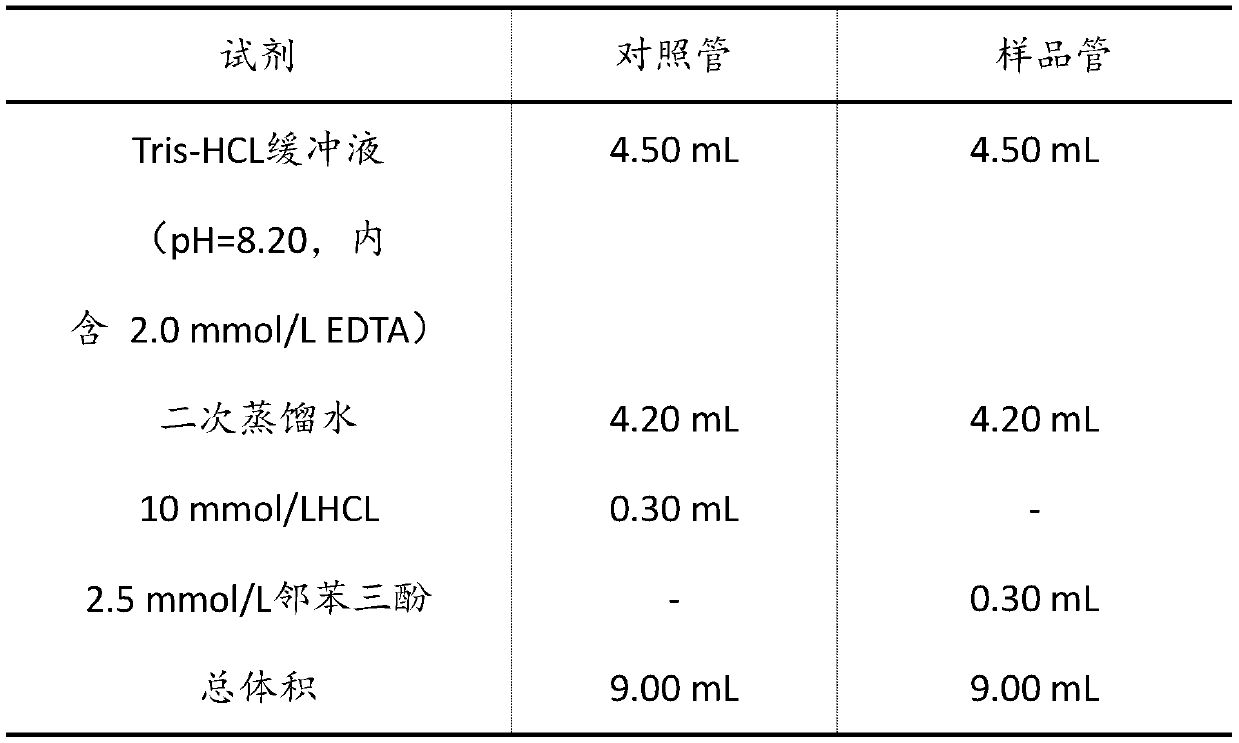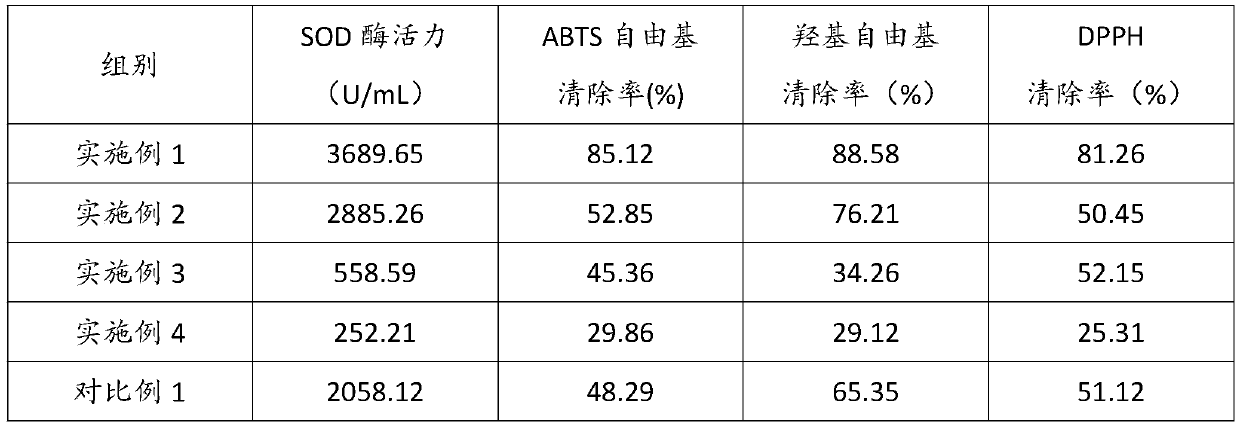Chestnut fruit enzyme and preparation method thereof
A fruit enzyme and chestnut technology, which is applied in the fields of bacteria, food science, and application used in food preparation, can solve the problems of thin enzyme taste, short fermentation period, and few fermentation products, so as to prolong the fermentation period and improve the antioxidant capacity. , the effect of enriching fermentation products
- Summary
- Abstract
- Description
- Claims
- Application Information
AI Technical Summary
Problems solved by technology
Method used
Image
Examples
Embodiment 1
[0042] A chestnut and blueberry enzyme comprises the following raw materials in parts by weight: 12 parts of chestnut kernels, 30 parts of blueberries and 60 parts of water.
[0043] Chestnut kernels are the raw chestnut kernels obtained after shelling out small chestnuts and soaking in 5g / LVc solution, removing and draining.
[0044] The preparation method of chestnut blueberry enzyme is as follows:
[0045] (1) Chestnut kernels, blueberries and water are mixed and crushed to obtain a fermentation substrate;
[0046] (2) The fermentation substrate was inoculated with Lactobacillus plantarum (commercially available, inoculum size 0.05%), Streptococcus thermophilus (commercially available, inoculum size 0.05%), Lactobacillus bulgaricus (commercially available, inoculum size 0.05%) and Saccharomyces cerevisiae (marketed sales, inoculum size 0.2%), 26 ° C fermentation culture, monitoring total sugar, reducing sugar, total acid, ethanol content in the fermentation broth, when the...
Embodiment 2
[0049] A chestnut and pineapple enzyme comprises the following raw materials in parts by weight: 15 parts of raw chestnut kernels, 25 parts of pineapple and 50 parts of water.
[0050] The chestnut kernels are the raw chestnut kernels obtained after shelling the small chestnuts and soaking them in 6g / LVc solution, removing and draining.
[0051] The preparation method of chestnut pineapple enzyme is as follows:
[0052] (1) Chestnut kernels, pineapple and water are mixed and broken to obtain a fermentation substrate;
[0053](2) The fermentation substrate was inoculated with Lactobacillus plantarum (commercially available, inoculum size 0.06%), Streptococcus thermophilus (commercially available, inoculum size 0.06%) and Saccharomyces cerevisiae (commercially available, inoculum size 0.3%), and fermented at 24°C. Total sugar, reducing sugar, total acid, ethanol content in monitoring fermented liquid, when satisfying total sugar 0-10g / L, reducing sugar 0-2g / L, total acid 1-3g / L...
Embodiment 3
[0056] A chestnut fruit enzyme comprises the following raw materials in parts by weight: 13 parts of chestnut kernels, 25 parts of apples, 25 parts of pears and 40 parts of water.
[0057] Among them, the chestnut kernels are medium-ripe chestnut kernels.
[0058] The preparation method of chestnut fruit enzyme is as follows:
[0059] (1) Chestnut kernels, fruit and water are mixed and crushed to obtain a fermentation substrate;
[0060] (2) The fermentation substrate was inoculated with Streptococcus thermophilus (commercially available, inoculum size 0.1%) and Saccharomyces cerevisiae (commercially available, inoculum size 0.4%), fermented at 28°C, and the total sugar, reducing sugar, and total acid in the fermentation broth were monitored, Ethanol content, when meeting total sugar 0-10g / L, reducing sugar 0-2g / L, total acid 1-3g / L, when ethanol content 1%-4% (v / v), obtain fermented liquid, fermentation time 10 sky;
[0061] (3) Add sucrose and citric acid in the fermented...
PUM
| Property | Measurement | Unit |
|---|---|---|
| Diameter | aaaaa | aaaaa |
Abstract
Description
Claims
Application Information
 Login to View More
Login to View More - R&D
- Intellectual Property
- Life Sciences
- Materials
- Tech Scout
- Unparalleled Data Quality
- Higher Quality Content
- 60% Fewer Hallucinations
Browse by: Latest US Patents, China's latest patents, Technical Efficacy Thesaurus, Application Domain, Technology Topic, Popular Technical Reports.
© 2025 PatSnap. All rights reserved.Legal|Privacy policy|Modern Slavery Act Transparency Statement|Sitemap|About US| Contact US: help@patsnap.com


